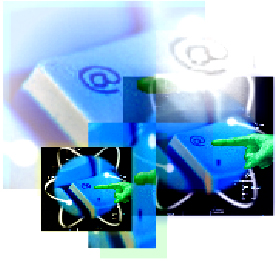|
|
|
||||||
|
|
Dynamic page | ||||||
|
|
|
How to Start Web Design? Good
Websites don't start in a Web creation program; they start in your head.
If you have an idea for a Website, learn all about from Web Guide and its
links… First, Web basics
in 6 steps If you plan to start a business on the Web, take up an online career or even just make your homepage, a basic understanding of the Internet is inescapable. If you’re largely clueless about how the Internet works and wish someone would tell you—minus the jargon—the perfect place to get clued in is at BBC’s Webwise site at http://www.bbc.co.uk/webwise. This plain-speaking but very practical guide walks you through the Net teaching you what it’s about, how to find your way about and how to get things done—in 6 steps. It uses small bite-sized chunks and is just right for a newcomer to the Net. The beginner’s guide at http://www.webnovice.com/ will help you find what you want on the Web and understand the jargon. The site provides good basic advice on how to surf the Net faster, join newsgroups, download software and create your own homepage on the Web. There are many other beginner’s sites such as the Internet 101 at http://specials.about.com/channels/internet/net101/ from About.com and one from Oprah Winfry at http://oprahgoesonline.com/. To keep pace with Internet related jargon, visit http://netlingo.com. Content is King First off, you must be quite clear of the purpose of your site. This holds true for any type of Website, whether it’s a personal home page, a small business set up, a hobbyist’s page or anything else. A Website without a purpose just takes up space and pleases no one but its own author. So, unless you’re just using your site for storage, start with putting down your purpose, your objectives, and the message. About.com’s Web Design section at http://webdesign.about.com, has a subsection entirely on Web content. There are extremely useful links to experts’ sites on creating and managing content. This is probably the biggest collection of links on content, specifically. Get your Web planning basics in order too from http://effuse.com/plan. Easy-to-read articles from experts will help you zero in on your content and basic purpose. A comprehensive guide that covers in some detail the basics of content and authoring for different audiences is at http://www.learnthenet.com/english/section/webpubl.html. How to write for
the Web All this means that information has to be tailored and arranged specially for online reading. Writing for the Web skillfully, involves learning how to keep in mind new online reading habits and patterns. It means being able to put forward information in a way that draws the reader in quickly and keeps him at the Website—or at least that it gives him what he wants so that he comes back again and again. About.com’s Web design section has a large number of links on writing for the Web. The articles and sites there explore how to write micro content, how to tailor headlines for the Web, how to write so that the site is reader friendly, how to liven up your prose, and lots more advice from experts and columnists. To get to this wonderful resource, connect to http://webdesign.about.com and click on Content. At http://www.efuse.com/Design/, columnist Christopher Meeks gives you six lessons on how to write for the Web, exploring outlining, how to start, special measures for online reading, and arranging information. One long-standing site that will tell you how to keep online reading patterns in mind is http://www.usableweb.com. It’s an extensive resource, but explore the topic index to get to the guidelines and tips on how to write well to make up a user-friendly site Learn HTML, the
language of the Web There are tons of places on
the Web where you can learn HTML. There are tutorials for all levels.
Quick first timer’s guides are available at http://www4.ewebcity.com/pcbill/
and at http://www.etips.net. A guide
that claims to be the easiest of all can be found at http://www.tips-tricks.com/begin.shtml.
Also If you want to download an entire course and study it offline at leisure, connect to http://www.trainingtools.com. Your course will be in PDF format. Use a tutorial that suits you from the resources above. Pick one that makes you feel comfortable and you should soon get going with your first page. Get the Web tools http://www.nonags.com and http://www.tucows.com.
|
|||||

